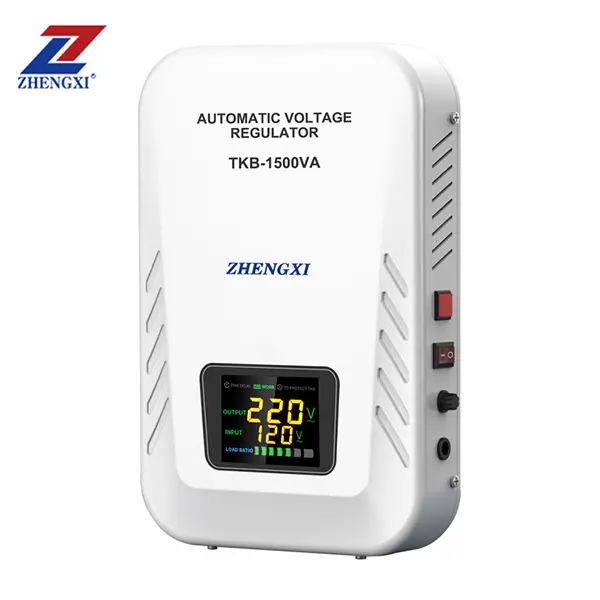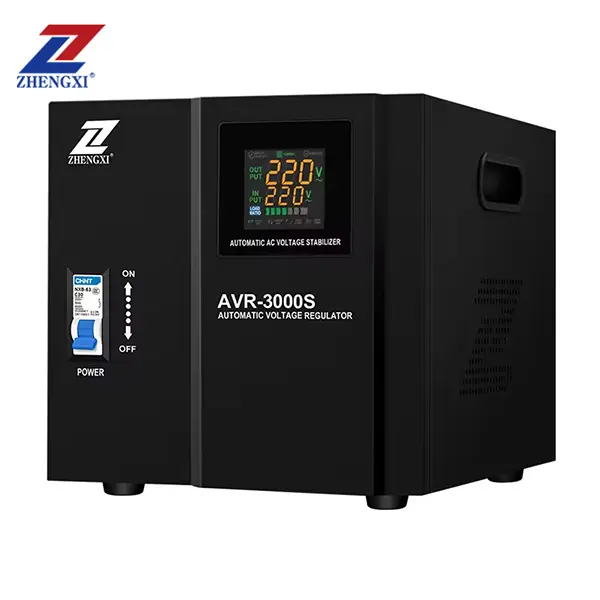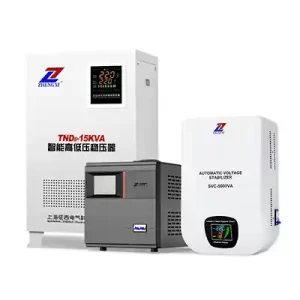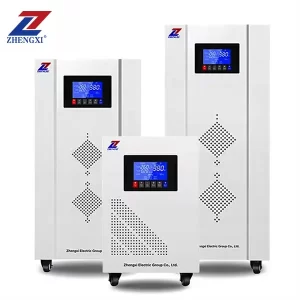Modern refrigerators are essential for daily life, but many homeowners overlook a hidden threat: voltage fluctuations. Inconsistent power supply can damage the fridge’s compressor, reduce energy efficiency, and shorten its lifespan. An AVR for refrigerator is a smart investment that protects your appliance, ensures stable operation, and helps you avoid expensive repairs. In this guide, we’ll explain what an AVR is, how it works, and how to choose the best one for your refrigerator.
What Is an AVR and How Does It Work?
An Automatic Voltage Regulator (AVR) is a device that maintains a stable voltage output regardless of input voltage variations. It continuously monitors the incoming power and adjusts it to safe levels—either boosting low voltage or reducing high voltage—before delivering electricity to your refrigerator.
AVR vs Surge Protector vs UPS
- Surge Protector: Shields against sudden voltage spikes but doesn’t stabilize ongoing voltage fluctuations.
- UPS (Uninterruptible Power Supply): Offers temporary backup during outages but often lacks real-time voltage correction.
- AVR: Provides continuous, automatic voltage regulation to prevent gradual wear and tear on sensitive components.
Key Reasons to Use an AVR for Refrigerators
Voltage-Sensitive Components at Risk
- Compressor: Low voltage causes overwork, overheating, and premature failure.
- Control Boards: Electronic circuits are vulnerable to surges or brownouts.
- Defrost Systems & Fans: Inconsistent voltage disrupts performance and increases the risk of ice buildup or airflow failure.
Consequences of Unstable Voltage
- Compressor Damage: Replacing a compressor can cost $200–$600.
- Food Spoilage: Power surges are responsible for up to 60% of fridge malfunctions, often resulting in spoiled food.
- Increased Energy Consumption: Operating under low voltage can increase energy use by 30–50%.
How an AVR Protects Your Fridge (and Your Wallet)
AVR Function in 4 Simple Steps
- Voltage Detection: Monitors the input voltage in real time.
- Regulation: Adjusts voltage up or down using transformer-based or buck-boost circuits.
- Stable Output: Delivers clean, regulated voltage (e.g., 220–240V) to the appliance.
- Cut-Off Protection: Instantly shuts down power when voltage exceeds safe limits (e.g., >280V or <90V).
Added Benefits of Using an AVR
- Improved Energy Efficiency: Stabilized voltage reduces power waste and operating costs.
- Reduced Operational Noise: Less compressor “buzzing” during voltage dips.
- Fire Safety: Prevents overheating caused by persistent over-voltage conditions.
How to Choose the Right AVR for Your Refrigerator
1. Correct Power Rating (kVA)
Use this formula: Fridge wattage ÷ 1000 × 1.3 (adds a 30% safety margin).
Example: 800W ÷ 1000 × 1.3 = 1.04kVA. Choose an AVR rated at 1kVA or higher.
2. Wide Voltage Correction Range
- Boost Range: 90V–150V to handle deep brownouts.
- Buck Range: 250V–280V to manage high surges.
- Tip: Avoid narrow-range AVRs that only cover 200V–240V.
3. Fast Response Time
- Choose AVRs with a response time under 10ms to protect delicate components.
4. Safety Certifications
- Ensure compliance with CE, ISO9001, RoHS, or equivalent safety standards.
5. Durable Construction
- Cooling Fans: Prevent overheating during long use.
- Metal Housing: Ideal for kitchens or humid environments.
Installation Tips: Dos and Don’ts
Best Practices
- Connect the refrigerator directly to the AVR; avoid multi-socket adapters.
- Allow at least 15cm of space around the AVR for ventilation.
- Ground the AVR for added surge protection.
What to Avoid
- Overloading: Don’t plug microwaves or ovens into the same AVR as your fridge.
- Moist Environments: Keep the AVR away from sinks and wet areas.
- Ignoring Warning Signals: Pay attention to indicator lights or alarms.
Long-Term Benefits: AVRs Extend Refrigerator Life
Using an AVR significantly boosts your refrigerator’s longevity and efficiency:
- Without AVR: 5–8 years average lifespan.
- With AVR: 10–15 years—nearly double!
Case Study: A restaurant in Mumbai experienced compressor failures every 18 months. After installing dedicated 5kVA AVRs, fridge downtime dropped to zero for over 7 years—saving over ₹120,000 ($1,500) annually in repairs.
Frequently Asked Questions
1. Can one AVR protect multiple appliances?
No. High-load appliances like refrigerators should have dedicated AVRs for safety and performance. Sharing power reduces effectiveness and increases risk.
2. Do inverter refrigerators need AVRs?
Yes. Even inverter models are vulnerable to extreme surges and brownouts. An AVR ensures smooth, safe power delivery.
3. What happens if the input voltage exceeds AVR range?
High-quality AVRs will automatically disconnect to protect your appliance. Look for auto-shutdown features above 280V or below 90V.
4. Are AVRs compatible with solar-powered refrigerators?
Yes. Choose AVRs with universal input support for DC-to-AC inverter systems—ideal for off-grid or hybrid solar setups.
Conclusion: Don’t Let Voltage Instability Destroy Your Fridge
A refrigerator is one of your most important home appliances—but it’s also vulnerable to unpredictable power conditions. An AVR for refrigerator provides essential protection, improves efficiency, prevents costly repairs, and extends appliance life. Whether you live in an area with frequent voltage fluctuations or just want long-term peace of mind, an AVR is a small investment that delivers big protection.
Ready to protect your refrigerator? Browse our range of reliable, high-performance AVRs specially designed for home appliances. Contact us today for expert recommendations or a free voltage assessment!










